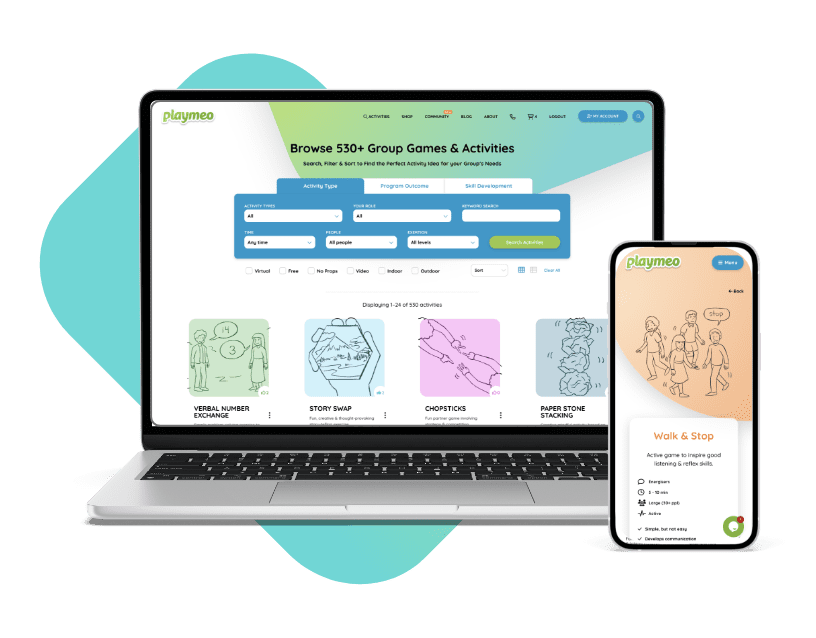Download our free 28-page ebook jam-packed with outrageously fun activity ideas.
Managing Dominant People in Your Groups
This week’s Facilitator Tips episode shares a variety of passive and proactive strategies and techniques for managing the impact of dominant people in your group.
<< Go to Episode 20 Go to Episode 22 >>
You don’t necessarily wish to shut these people down, but directing their energies to more productive or functional outcomes is frequently useful.
Click the play button above to get started.
Want to join the conversation?
Please leave a comment at the bottom of the page (you must be logged in.)
Don’t have a playmeo account? Join today.
Useful Links & Resources
- Reflection Strategies – click this link to explore a variety of useful strategies such as Paired Shares Debrief, Whip Around and Fill The Gap to help you manage dominant people.
- Enhance Your Leadership Skills – playmeo offers a variety of professional development resources, including training workshops, one-on-one coaching and online learning courses. Click the link to learn more.
…
Video Transcript
Hi there and welcome to Episode 21 of the Facilitation Tips video series. My name is Mark Collard. I’m an experiential trainer and author, and today I want to talk to you about how to manage dominant people.
We’ve all been in those situations whether you’re a group leader or not where we look around the group and go that person is taking up a lot of the oxygen in the group, often a lot of the attention, a lot of the focus. And from the health perspective of a group that’s not necessarily a really positive sign. You want to be able to manage that as a facilitator.
So there a couple of types of strategies that are really useful, and I classify them in one of two ways. One is the passive that is almost trying to prevent it from occurring. In the beginning, I like to frame the experience, so I might mention to my group that we’re going to provide an opportunity to reflect on what we’ve just done, and then I provide everyone with an opportunity to share. By saying that upfront it’s possible that some of those dominant people may provide a bit more space for others.
Where that hasn’t worked though, I might need to interrupt them. Perhaps someone else is talking and I might pause the dominant person from maybe interrupting that person, or if they’ve gone on too long I might also find an opportunity to interrupt them and say let’s provide another opportunity for someone else to share. So don’t be afraid to do that, with sensitivity of course.
And then naturally the ability to avert, you know, perhaps so that you might turn your body or even just face other people, that gives a clue to the dominant ones that maybe the attention’s not on them. Now it may also give them a signal to actually become even more dominant.
So you may have to go into the more proactive strategies. And the first one is, use a structured strategy for conversation. Activities like the whip around or paired shares where there’s an actual structure for the way in which people need to share, it’s much easier to manage those dominant people.
If all of this is not working, maybe you need to have an individual private chat with somebody. Just let them know that you really value their contribution, and what would be really great if they could help you actually coax out some information from other people. That sometimes works.
And then maybe remind them about the full value contract. If you’ve created some sort of working agreement, allow them to contribute in a way that actually provides full value for everybody, not just their full value.
So that’s today’s episode, a couple of different ways in which I’ve managed to work with dominant people.
For further information please go to our show notes at www.playmeo.com Episode 21.
And if you haven’t already noticed, we have a free app and you can find that on any of your favourite app marketplaces. Just simply plug in playmeo and check it out.
Until next time, all the best.






